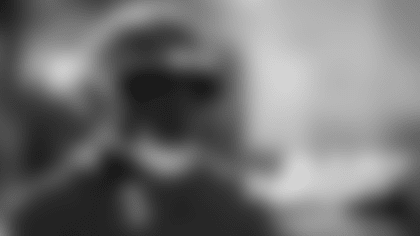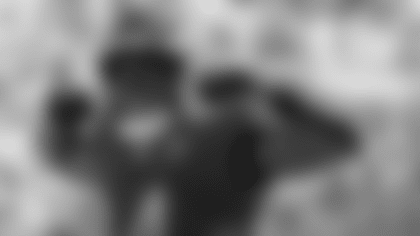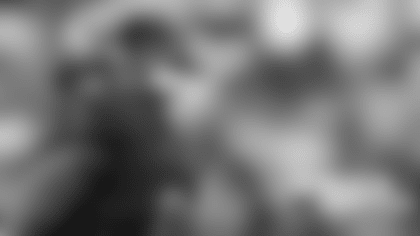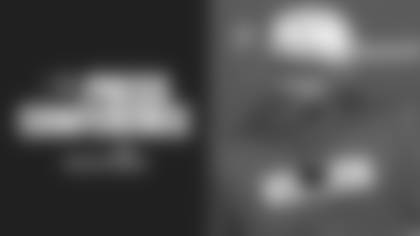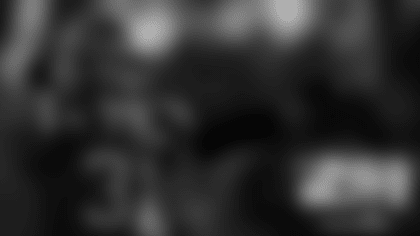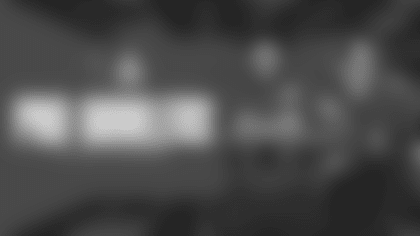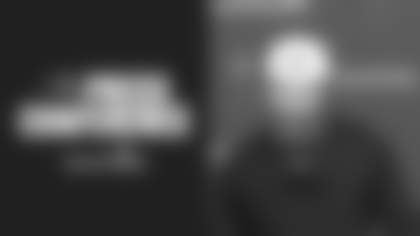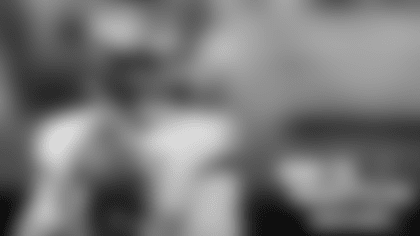In 2017, the Tampa Bay Buccaneers' offense snapped the ball from inside its opponents' 20-yard line on 53 possessions. Twenty-six of those drives ended in the end zone, and that red zone touchdown percentage of 49.1% ranked 24th in the NFL.
This statistic definitely did not escape the notice of Dirk Koetter and the Buccaneers' coaching staff, especially when it is so easy to tie it to another big, flashing warning sign: Tampa Bay was 3-7 in games decided by seven points or less last year, and 1-3 in games decided by three points or less. It's easy to see how a couple field goals turning into touchdowns here and there could affect the W-L bottom line very quickly.
As such, improvement in the red zone was a hot topic at Buccaneers headquarters throughout the offseason and into training camp. The Bucs wanted to get their touchdown percentage up above 60% in 2018, noting that doing so would put them in the top 10 in that category. In fact, only five times had a red zone touchdown efficiency of 60% or better in 2017 and three of them ended up in conference championship games (Jacksonville, New England and Philadelphia).
In reviewing their red zone struggles in 2017, the Buccaneers believed it was a matter of execution rather than play-calling or overall strategy. Tampa Bay's offense began executing well in all phases of the game in the preseason, and that extended to the red zone, where the team hit that 60% goal exactly on the nose.
Through the first two weeks of the regular season it was more of the same, if even a little better. In their wins over New Orleans and Philadelphia – in which they notably exploded for 75 points – the Bucs had made six red zone incursions and had scored touchdowns on four of them for a 66.7% success rate. The other two drives ended in field goals so there were no scoring opportunities that were absolutely lost. In 2017, the Bucs failed to score at all on nine of their 53 inside-the-20 opportunities.
However, that efficiency slipped in the Buccaneers' third game, last Monday night's 30-27 loss to the Pittsburgh Steelers. The most significant deciding factor in the game was almost certainly the 4-1 turnover ratio, as the Steelers built a 20-point halftime lead thanks to four straight Buccaneer drives ending in a giveaway. That said, Tampa Bay's offense was also just two of five in the red zone, and given the final margin on the scoreboard, that was critical as well.
As was the case in 2018, Monday's red zone woes were impossible to pin on one single issue.
"Like it always is – it's a combination," said Koetter. "As we talked about last year when we talked about that – rarely is it one single thing. It's one single thing on this play then something else on this play then something else on this play."
The Buccaneers won the coin toss to start the game but deferred, which meant they would be receiving the kickoff to start the second half. The dream scenario with such a setup is to score a touchdown in the two-minute drill before halftime and then to come out with another seven-point possession to start the second half. The Bucs had a shot at that but settled for a field goal after two lengthy (by yardage) drives. Worse yet, the Steelers split up those possessions with their own two-minute drill that ended up in the Bucs' end zone.
On the second quarter field goal drive, the Buccaneers got a first down at the five on a brilliant 51-yard catch by Mike Evans. The next two plays were ineffective, and on third down from the three Fitzpatrick escaped some pressure, rolled right and eventually fired a hard pass to Chris Godwin, who was straddling the goal line. Godwin was swarmed by three Pittsburgh defenders and the pass was incomplete, but he has made difficult contested catches on quite a few occasions. On the Bucs' next drive in the third quarter, a penalty and a sack short-circuited a first-and-goal at the five.
"We had another play where the ball was on the money," said Koetter. "I know if Chris Godwin had that a hundred times he'd think he was going to catch 95 of those. The defender made a good play grabbing his arm in there – that was good play by him. We had a couple runs where we didn't block it clean enough. We had a free hitter in the hole."
The third failure to turn a red zone trip into a touchdown was actually the worst kind, as the Bucs came away with no points after earning a first down at the 12. On this occasion, blitzing linebacker Jon Bostic leaped to tip a Fitzpatrick pass, sending high up into the air and into the middle of the field, where it was intercepted by cornerback Mike Hilton. That play included a missed blocking assignment and perhaps a poor decision to throw in the face of that blitz by Fitzpatrick, and it also had an element of bad luck for the Bucs. Hilton was only stationed at the exact spot the ball came down because he had blown his own coverage assignment and left Adam Humphries wide open in the other half of the end zone.
"We're basically throwing hot off our right side and it ends up being an interception," said Koetter. "That's what happened. That's a bad ball by us."
That inefficient night in the red zone brought the Buccaneers' overall season mark to a 54.5% touchdown efficiency. That's an improvement over last season but still just in the middle of the league rankings. That said, the Buccaneers were one Godwin catch away from hitting their 60% touchdown goal in the Steelers game, which underscores the reaction of Offensive Coordinator Todd Monken to the team's red zone numbers so far. As Monken pointed out, we're still talking about a small sample size, and as such he's not yet concerned about the numbers.
Once again, it just comes down to execution.
"It's tough because some of the things we did down there were self-inflicted," said Monken, who listed some of the same mistakes that Koetter noted above. "Again, those aren't excuses – we've got to do it better. There wasn't really anything – looking back, sure, running the football probably helps that. I've got to do a better job of that. We've got to do a better job collectively. That's a part of it and at the end there isn't a call that came up that I want to take back or something – it's the execution that we've got to do better and that's the way it is. We've got good players – we've just got to do better when we get down there. Now, part of that is if you get down there and try to score touchdowns, we've been explosive and that's added to that without actually getting there. We've got to do better down there."
On Sunday, the Buccaneers will play in Chicago against a Bears defense that has been impressive overall, particularly in terms of sacks and takeaways, but not among the league leaders in red zone efficiency. Opponents have scored on 75% of their red zone incursions against Chicago, though we're talking about an even smaller sample size here of just four possessions. Still, the Buccaneers will need to execute better in this part of the field than they did on Monday night, and there's no reason to believe they can't meet that goal.
PLAYING CATCH-UP ON A SHORT WEEK: Last week, the Buccaneers had an extra day of rest to let their injured players recuperate, as they were scheduled for a Monday night matchup against the Steelers. That was helpful in particular for defensive end Jason Pierre-Paul, who essentially got four days to rest a sore knee because he was held out of the Thursday field session. Bay the final practice of the week, Pierre-Paul was full-go, and on Monday night he gathered two sacks of Ben Roethlisberger.
The Buccaneers are paying that extra day back this week, in the aftermath of that Monday night game and with the trip to Chicago looming on the weekend. Since the players had only one short day to recover from a physical game on Monday night, Koetter ran a lighter-than-usual practice on Wednesday. The team eschewed wearing pads, spent the entire session inside the indoor facility and ran much of it at half-speed.
"I think you have to [lighten practice]," said Koetter on Wednesday. "Forty-one hours of recovery I don't think is enough to go out and have your typical Wednesday padded practice. We made a decision – we definitely cut it back on the physical side [Wednesday]. We'll hope to be back up and running at a really good pace by tomorrow."
The Buccaneers did go back out into the sun on Thursday and added shells but not full pads. It was a normally-paced practice, but the team is still making sure not to overwork the players this week.
"You're short a day," said Koetter. "You have to make some adjustments for that. We made those adjustments. You're not going to know for sure until Sunday at one o'clock and how it plays out in those three hours."
As was the case on Wednesday, the Buccaneers only held out one player from Thursday's practice: defensive tackle Beau Allen, who suffered a foot injury in Week Two. However, the team is clearly a bit thin at that position, as both veteran Gerald McCoy (biceps) and rookie Vita Vea (calf) were limited for the second straight day. Vea, in particular, hasn't played in a game yet after suffering his injury on the third day of training camp, and though he started practicing last week he has not yet been cleared to be a full participant. Still, these practices are important in getting him acclimated to the game again after seven weeks of rehab and conditioning work.
"It's still physical in practice, especially for those guys up front on both sides," said Koetter. "You're exactly right though – there's no better way to get in football shape than to play football. There's a fine line though between training camp, preseason, practice football, and real NFL football. Some of that is medical decisions made by the guys that make those calls. After they're cleared to play, then it becomes our call a little bit. Those are hard decisions."
The Buccaneers' official injury report didn't change on Thursday, as tackle Demar Dotson (knee) and cornerback Marcus Williams (hamstring) also remained limited.
FLAGGING CONCERNS: The Buccaneers were drawn into the league-wide discussion about the new roughing-the-passer rules when each team in Monday night's contest drew two such penalties. Defensive Coordinator admitted to some frustration over the calls on Wednesday, noting that what defensive players are being asked to do to avoid penalties in some cases violates the laws of physics.
The Buccaneers didn't come out appreciably worse in the exchange of those four roughing calls. The one levied on Jason Pierre-Paul only extended a drive for one more set of downs before a punt. The one called on Gerald McCoy was tacked on to the end of a 43-yard gain that already had the Steelers closing in on a field goal. Pittsburgh's two roughing calls also contributed to one field goal drive; the other came right before an interception in the second quarter.
In terms of penalties overall, the Buccaneers haven't fared too badly so far this season. Tampa Bay has had 20 accepted flags against the team, which is the 10th fewest in the NFL after three games. And Koetter didn't think there was anything to correct in the plays that led to the penalties for Pierre-Paul and McCoy.
"We harp mostly on pre-snap penalties – those are the ones that are preventable," said Koetter. "Aggressive penalties are going to happen sometimes. We've got to try to be smart about it. On both of our roughing the passer penalties last week you couldn't tell those guys to do anything different. Sometimes on a holding penalty or something like that those are easily – you can correct what we did wrong. You're going to have some penalties out there. Every crew calls it a little bit different. Even though the league is trying to get it more [consistent] between crews, the crews do call it differently."
The Bucs have committed four false starts and one illegal shift penalty on offense – the type of "pre-snap" infractions Koetter wants to eliminate – which ranks about the middle of the league. The defense has drawn one neutral zone infraction flag and been called for being offside three times; again, that's right in the middle of the NFL's rankings. The Buccaneers also have committed only three holding penalties on offense, the fifth-lowest total in the NFL through three games.



